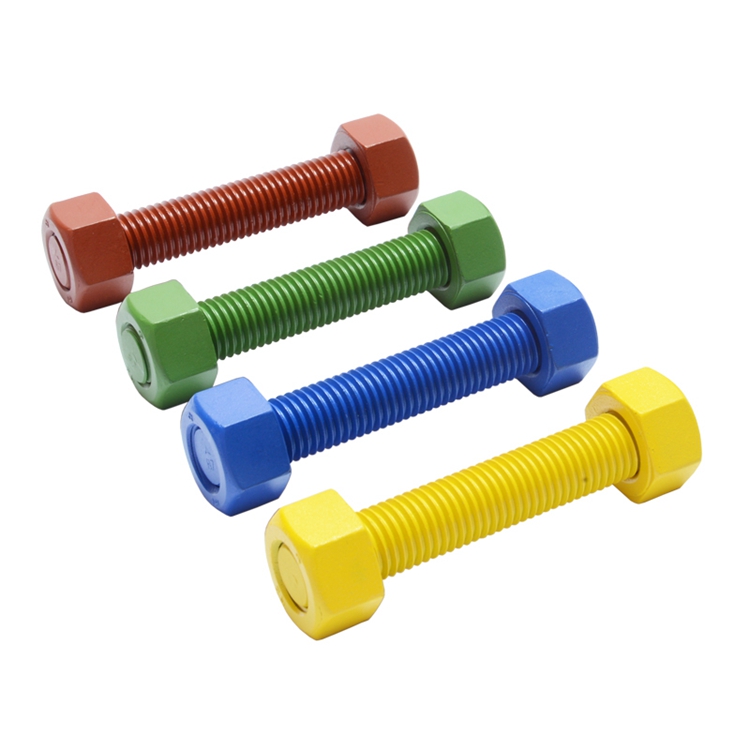Bronze Bolt Manufacturing Exploring the Process and Industry Trends
Nov . 30, 2024 01:26 Back to list
Bronze Bolt Manufacturing Exploring the Process and Industry Trends
The Rise of Bronze Bolt Factories Innovations and Impacts
In the realm of manufacturing, few materials have had the enduring impact of bronze. Known for its exceptional durability and resistance to corrosion, bronze has been utilized in various applications for centuries. Among the most critical products made from bronze are bolts—essential components in construction, machinery, and various engineering disciplines. The establishment of bronze bolt factories has marked a significant evolution in manufacturing practices, contributing to technological advancements and economic development.
Historical Context of Bronze Use
Bronze, an alloy typically made from copper and tin, emerged in human history during the Bronze Age, around 3000 BC. Its superior properties over pure copper made it a popular choice for tools, weapons, and, eventually, fasteners like bolts. The significance of bronze bolts can be traced back to ancient civilizations, which recognized their strength and reliability. As society progressed, the demand for stronger and more resilient fastening solutions propelled the need for specialized manufacturing.
The Emergence of Bronze Bolt Factories
In the modern era, the advent of industrialization spurred the growth of factories dedicated to the production of specialized components, including bronze bolts. These factories employ advanced technologies and processes to manufacture high-quality bolts at scale. The integration of computer-aided design (CAD) and automated machinery has revolutionized bolt production, allowing for precise specifications and better quality assurance.
A typical bronze bolt factory operates within a set of well-defined stages—material preparation, forging, machining, surface treatment, and quality control. The use of automated systems in these processes has significantly increased production efficiency, reducing lead times and minimizing human error. Implementing modern technology not only enhances productivity but also enables factories to meet the ever-growing global demand for bronze bolts.
Applications and Benefits of Bronze Bolts
Bronze bolts are renowned for their versatility and robust nature, making them suitable for various applications. From marine environments where corrosion resistance is paramount, to construction projects requiring structural integrity, copper-tin alloy fasteners have proven indispensable. Their non-magnetic properties also make bronze bolts ideal for use in sensitive electronic equipment, where magnetic interference must be avoided.
bronze bolts factories

Furthermore, bronze bolts are often used in joining dissimilar metals—an important requirement in industries like aerospace and automotive. By choosing bronze bolts, manufacturers can achieve a level of compatibility that enhances overall product performance, preventing galvanic corrosion that can occur when different metals are in contact with each other.
Economic Impact of Bronze Bolt Manufacturing
The establishment of bronze bolt factories not only has implications for the manufacturing sector but also for the broader economy. These facilities generate employment opportunities, contributing to local economies by creating jobs in engineering, production, logistics, and management. The demand for raw materials, such as copper and tin, further stimulates mining and refining industries, creating an interconnected economic ecosystem.
Moreover, as industries continue to expand their operations globally, the need for reliable fasteners will only increase. This trend emphasizes the long-term sustainability of bronze bolt factories within the global marketplace. Open markets allow for competitive practices, resulting in better pricing for consumers and increased innovation from manufacturers striving to remain relevant in the industry.
Challenges and Future Directions
Despite the numerous advantages associated with bronze bolt factories, challenges remain. The fluctuating prices of copper and tin—often influenced by geopolitical factors—can impact production costs and ultimately the pricing of finished bolts. Furthermore, environmental concerns regarding mining practices necessitate the adoption of sustainable sourcing and production methods.
To address these challenges, innovative solutions are paramount. Research into alternative materials and methods, such as recycling bronze, can alleviate pressure on natural resources. As industries move toward more sustainable practices, bronze bolt manufacturers will need to adapt by investing in green technologies and reducing waste throughout their production processes.
Conclusion
The growth of bronze bolt factories exemplifies how advancements in manufacturing technology can meet the evolving demands of various industries. As the world continues to innovate, bronze bolts will remain a vital component in numerous applications, from construction to aerospace. By navigating challenges and embracing sustainability, these factories can ensure their place in the manufacturing landscape for years to come, continuing to drive economic growth and technological innovation.
Latest news
-
High-Quality Panel Stud Bolt Reliable Panel Stud Bolt Factory & Suppliers
NewsJul.08,2025
-
High-Precision Fine Thread Locknuts Manufacturer & Supplier Custom Solutions
NewsJul.08,2025
-
PH Imperial Stud Bolt – High Strength Fasteners from Leading Supplier & Factory
NewsJul.07,2025
-
High-Quality Allen Wrench Bolts Leading Factory, Company & Suppliers
NewsJul.07,2025
-
Wholesale Ball Stud Bolt - High Quality Supplier & Factory Price Reliable Wholesale Ball Stud Bolt Company
NewsJul.06,2025
-
High-Strength Alloy Bolts Manufacturer & Supplier Quality Alloy Fasteners Factory
NewsJul.06,2025
